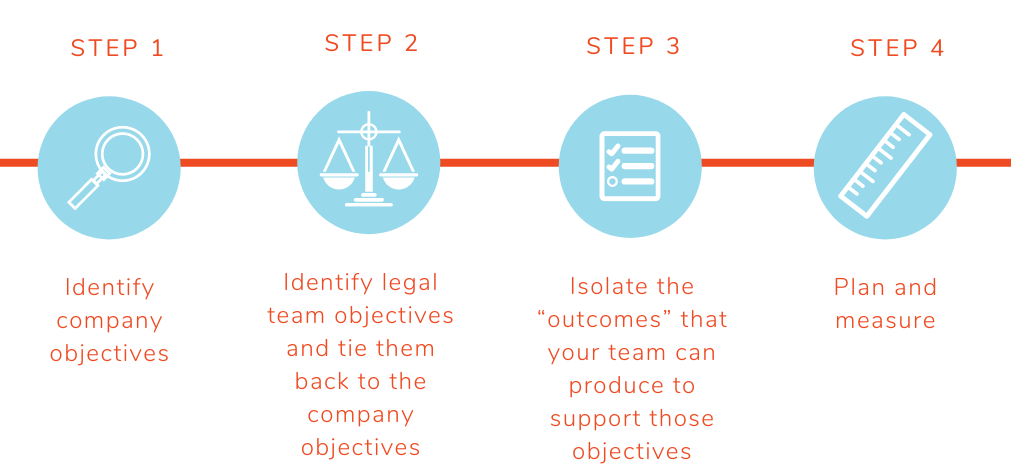What’s My Impact? Using Metrics to Communicate the Value Legal Delivers

Gabriel Safar
CEO | LeasePilot
The legal industry has shifted significantly in recent years, and in-house legal teams are often at the heart of this shift. Among these changes come the need to get businesses to recognize the value in-house legal teams provide. However, the ability to articulate these ideas in practical terms can be a difficult feat for a number of reasons.
In today’s modern workforce, analytics play such a vital role in performance management that implementing key performance indicators (KPIs) should not be a question of “if” but rather “when”. But KPIs are not something to rush into or put into place without careful consideration of the ultimate goals of the business, what activities or metrics are the best to monitor, and how the process of data gathering will work.
Done right, implementing KPIs in legal departments can demonstrate value, modify behavior to align with organizational goals and identify needs and trends which can all have a positive, long-term impact on the effectiveness of in-house legal teams. So what exactly are KPIs and how can they be implemented?
What are KPIs?
Key performance indicators, or KPIs measure the performance of a department, company, firm, or business unit. Typically, these metrics use numbers and are tracked over a period of time. KPIs provide targets for teams to aim, milestones to measure progress, and insights that help people across the organization make better decisions.
Writing a clear objective for your KPI is one of the most important parts of developing KPIs. A KPI needs to be intimately connected with a key business objective and an integral part the organization’s success.
Overall KPIs need to be:
- Quantifiable and actionable
- Measure the factors that are critical to the success of the organization
- Directly tied to the business goals and targets
- Limited to a small number
- Applied consistently
Why are KPIs Important to Measure?
Measuring KPIs enables businesses to understand the performance and health of their team so that critical adjustments can be made to achieve strategic goals. Knowing and measuring the right KPIs will help achieve results faster and more effectively. In-house legal teams create huge amounts of value for an organization, but that story is often lost through ineffective communication. Lawyers think in paragraphs, executives think in metrics. If lawyers can’t convert their ideas and activities into a framework their colleagues can understand, then their story goes untold.
“In-house legal teams create huge amounts of value for an organization, but that story is often lost through ineffective communication. Lawyers think in paragraphs, executives think in metrics. If lawyers can’t convert their ideas and activities into a framework their colleagues can understand, then their story goes untold.”
How are KPI’s Derived?
KPIs should be derived directly from your objectives so that you know how you are performing in accomplishing your goals. Follow the steps outlined below.

The Problems with Measuring Performance
While measuring performance can be excellent for determining the efficiency of legal teams, problems do exist. These can include:
- False precision: implausibly precise statistics that create a distorted picture of truth.
- Administrative burden: While quality performance measurement and reporting have great potential to improve the quality of a business, these activities can pose a significant administrative burden on participating staff.
- Lack of control: Legal has a lack of control over many activities and therefore measuring performance can seem counterproductive to a legal team.
The Solution to Mitigate Problems
KPIs are only really useful when the right ones are identified and implemented in the correct way. To do so, follow these rules:
- Less is more. Generally, you should have no more than 3 to ensure a variety of measures without overwhelming the picture. Each business objective should have at least 1 leading indicator and 1 lagging indicator. This allows you to predict future performance as well as record the actual performance and compare these to the direction of your business objective.
- Review trends not snapshots. Reviewing trends helps you understand how your business has performed and predict where current business operations and practices will take you. Done well, it will give you ideas about how you might change things to move your business in the right direction.
- Benchmark. Every business is different and deals are inherently unique, so you need to create a baseline to measure against. This can be done through benchmarking – taking like things and comparing them to like things in the aggregate rather than only in one specific instanceHere are a couple of ways to establish benchmarks:
- Talk to peers and find out what they are measuring and what they are accomplishing
- Read reports
- Make educated guesses
KPIs don’t need to be perfect. There is no “perfect set” of measures and organizations should experiment with a “starter” set of metrics and evolve these measures over time based on what they learn. What is most important to remember is to regularly review processes with the internal team and management, set defined intervals where you will adjust, scrap or change KPIs as you learn and pair KPIs that measure competing values: e.g., cost & quality, speed & risk.
Sample KPIs
Cost
The reality is that legal budgets are coming under increasing scrutiny and measuring expenditures is easy. However, expenditures are only one part of the cost equation. To provide management teams with a more comprehensive understanding of legal budgets, quantify the value the legal department delivers to the organization. For example, real estate organizations often bill internal legal time to specific assets; make sure to aggregate those billings and present them in the department budget as offsetting the legal expense line items.
Another technique is to offset internal legal expenditures by calculating the costs of outside legal resources that were not used. To do this, each year set a target budget for outside counsel and then measure whether you come in over or under that target. To the extent the legal team is efficient and reduces the amount of outside counsel expenditure, offset those savings against internal legal expenditure.
Quality
Quality is paramount and is often overlooked by management teams because it’s rarely measured. One technique you can use to measure quality is to define a set of positive elements you want to see in your final legal documents and negative elements you don’t want to see in your final legal documents. Give each element positive and negative “points” and then audit your completed deals periodically and compile an aggregate score. Use this too to measure department outcomes, team outcomes or inside versus outside counsel outcomes.
Speed
One of the most important legal department KPIs is the average time to process a deal. This is most commonly captured by measuring a) the time it takes to go from deal approval to when the lease first goes out, and b) from deal approval to signature.
To create more context, supplement speed KPIs with a measure of deal complexity. For example, keep track of how many deals are on the tenant form, size of deals, duration of term, etc. and then over time watch how your speed KPIs vary with your measurement of deal complexity.
Or identify certain blockers that can slow a legal department down and measure those as well. For example, when teams are overworked and processing too many deals the speed metrics may be adversely affected. So in that case plot caseload against speed. Or tenant’s may be a blocker so measure the amount of time deals sit with tenant counsel and plot that against your speed metrics.
Customer Satisfaction
In-house legal teams have a number of stakeholders they serve. These include both internal clients such as the company’s management teams and business units, but also external customers like tenants. To measure internal client satisfaction consider defining a set of attributes business teams value like responsiveness, practicality, accuracy and business sense and then survey the business teams and ask them to score on a scale of 1-5 how they think the legal team performs on each of these criteria.
Assessing external customer satisfaction is tricky because there is tension between the legal team’s obligation to protect their internal client from risk and to make their external customer happy by being easy to work with. It’s impossible, however, to ignore the fact that the external customers keep the lights on, and their satisfaction matters immensely to the ultimate success of any real estate organization. Therefore, measuring how legal teams contribute to overall customer satisfaction is critical. One way to do this is to send out NPS surveys. This simple survey asks a customer to rate on a scale of 1 to 10 how likely they would be to recommend a product or service to a peer.
Another way to measure external customer satisfaction is by surveying tenants and asking them how much they spent on their legal bills. In this context money (and paying less of it) serves as a proxy for customer happiness. For those real estate organizations that use both inside and outside counsel on deals, consider breaking out your tenants’ legal bill for drafting and negotiating leases based on whether the landlord used in-house or outside legal resources. for more on this topic see our post “Making Legal a Profit Center.”
Conclusion
There is no question that legal budgets are under pressure. Lawyers therefore need to communicate the value that they deliver to their companies in terms business leaders can understand. KPIs are a way for lawyers to control the narrative rather than have a narrative imposed on them.
